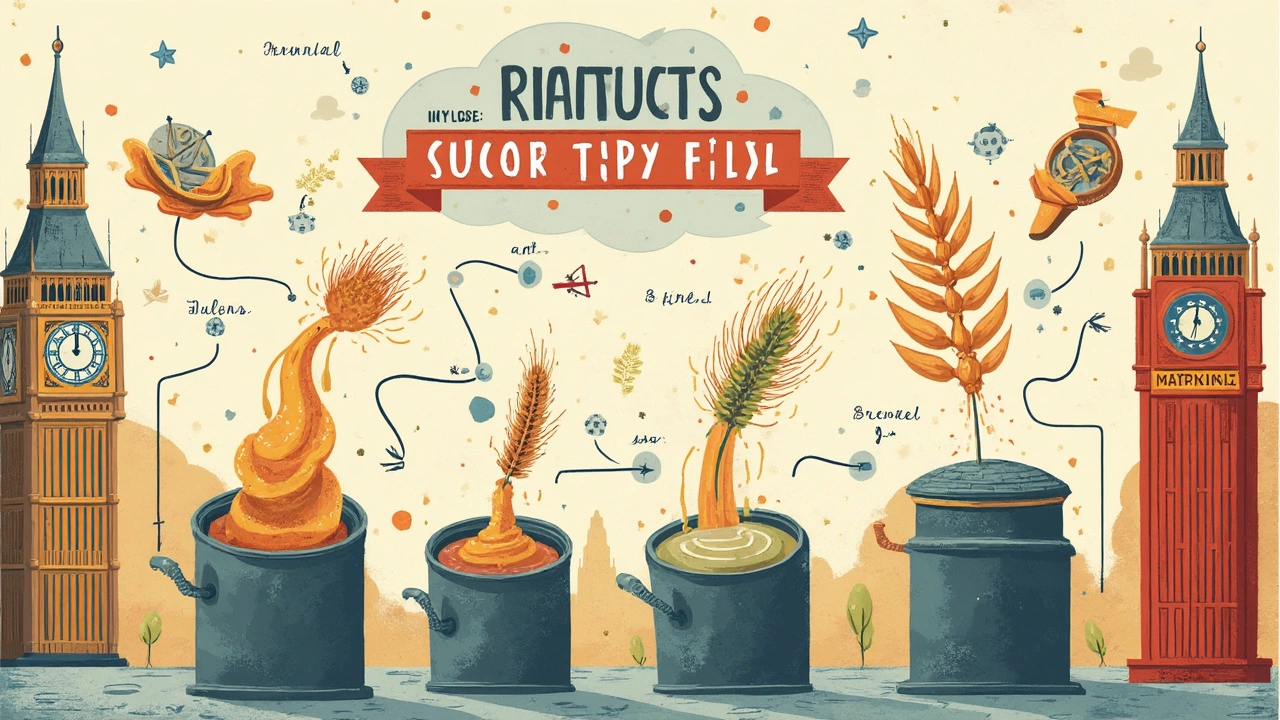Ever been hit with the sudden urge to brew your own beer, but patience isn't exactly your strongest suit? You're not alone. Brewing beer at home can be a long process, but if you know what to look for, you can cut down that wait time significantly and still end up with something pretty tasty.
First things first, when we're talking about speed in brewing, we're really focusing on a couple of key areas: fermentation time and how long you're willing to wait for flavors to mature. Some styles lend themselves better to quick turnarounds than others, and that's where certain beer styles come into play.
Let’s dive into the styles that don’t like hanging around. A good number of ale styles can be your best friends here. We're talking about beers like Pale Ales or Bitters. They generally ferment faster than lagers because ales use yeast that works at warmer temperatures, which speeds things up quite a bit.
The great news for anyone in a rush is the wide range of starter kits available these days. Some are designed precisely with speedy results in mind. And with beginners or casual brewers in mind, many home brewing kits take a lot of the guesswork out of the process.
- Why Speed Matters in Homebrewing
- Best Beer Styles for Quick Brewing
- Tools and Kits That Save Time
- Tips for a Faster Brewing Process
- Common Mistakes and How to Avoid Them
Why Speed Matters in Homebrewing
So, why all the fuss about quick homebrewing? Well, for starters, not everyone digs waiting a few months to sip on their own creation. The thrill of making your own beer is half the fun; the other half is drinking it without facing eternity.
When you’re using home brewing kits, the idea is often to keep it simple and fast. These kits are designed to be user-friendly, cutting out the hard stuff, and get your brew ready in days instead of weeks. Plus, if things go south, you’ve not spent ages on a batch that doesn’t taste quite right.
Fast brewing is also great for those sudden urges to impress friends with your own pint or when you’re planning a party and forgot the one thing that'll make it epic – more beer. Being able to whip up a batch in a short time is nothing short of a social superhero move.
Moreover, speeding up your brewing process doesn’t mean sacrificing quality. With the advances in brewing technology and ingredients, quick beers can still bring a flavor punch. Yeasts have come a long way and are more reliable, ensuring a quicker, efficient fermentation without compromising taste.
A major plus is the chance to experiment more. The faster you brew, the faster you learn. You can try out different flavors, tweak recipes, and find that perfect match for your taste buds. Home brewing becomes less of a duty and more of a rewarding cycle of fun.
For those interested in some numbers, consider the time differences:
| Beer Type | Approximate Fermentation Time (Days) |
|---|---|
| Ales (e.g., Pale Ale) | 7-10 |
| Stouts | 10-14 |
| Lagers | 21-30 |
As you can see, by choosing quicker brewing methods and beer types like ales, you can reduce your wait and still end up with something pretty enjoyable.
Best Beer Styles for Quick Brewing
If you're eager to get brewing but don't want to wait weeks for your beer, you're in luck. Picking the right beer style can speed up the process significantly. Generally, pale ales, blondes, and weisbiers are your go-tos for quicker brewing. These beer styles typically have a shorter fermentation period, thanks to the types of yeast they use and their simpler ingredient lists. Let's break down why these are the champs for fast brewing beer.
First up, pale ales. They're a favorite because they use ale yeast, which ferments at warmer temperatures than lager yeast. This means you can usually have a pale ale ready in about two to three weeks from start to finish. They also don't rely on extensive aging to develop flavor, so you're not stuck playing the waiting game.
Blonde ales are another solid option. They're light, crisp, and don't require any complex ingredients or brewing steps. You can often have a blonde ale ready in as little as two weeks. The added bonus? It's a refreshing, easy-drinking style that's perfect for a range of occasions, whether you're planning to chill at a barbecue or just relax after work.
Then there's weisbier, or wheat beer. This style is a great choice because of its robust flavors that don't need much aging to shine through. Plus, they can be done relatively quickly, sometimes within just a few weeks. The yeast that gives weisbier its distinct banana and clove notes works efficiently, keeping your brewing timeline tight.
For those who like a bit of data to back up their brewing choices, here's a quick overview:
| Beer Style | Approx. Brewing Time |
|---|---|
| Pale Ale | 2-3 weeks |
| Blonde Ale | 2-3 weeks |
| Weisbier | 2-4 weeks |
These styles not only produce tasty results but also cut down the time till you're sipping your own homemade pride and joy. For anyone looking to use home brewing kits effectively, starting with these beer styles is a smart move.

Tools and Kits That Save Time
Alright, let's talk about the real game changers in homebrewing—the tools and kits that can save you loads of time. If you think you need a mini-brewery in your house to start brewing beer quickly, think again. Many of today’s home brewing kits are designed to make the process fast, easy, and almost foolproof.
First up, consider all-in-one brewing systems. These are like the Swiss army knives of the homebrewing world. Machines like the PicoBrew or the Brewie are designed to handle every step of the process for you, from mashing to brewing. Just pour in your ingredients, push a few buttons, and let the magic happen. They often cut down on cleaning time, too, because everything happens in one place.
Ever heard of extract brewing kits? These are a huge time-saver because they skip the grain mashing process. Instead, you're working with malt extracts, which are ready to go. The result? You can have your brew ready to ferment in just half the time it would take if you started from scratch. Classic brands like Mr. Beer are popular for beginners, offering pre-hopped malt extracts to make things even faster.
Another handy tool is a fast fermenter. A clever gadget with a conical design, which helps speed up the fermentation process by allowing yeast to settle neatly at the bottom. And, as a bonus, it makes transferring beer to your bottles quicker and cleaner.
Also, think about investing in an immersion chiller. These bad boys cool your wort quickly after boiling, which is crucial if you're keen on cutting down the total brewing time. They're simple to set up—just connect it to a cold water source and you're good to go.
If you’re curious about comparing various gadgets, here's a quick glance at how these products stack up:
| Product | Time Savings | Features |
|---|---|---|
| PicoBrew | 30%-40% | Automated brewing process |
| Mr. Beer Kit | 50% | Pre-hopped malt extracts |
| Fast Fermenter | 20%-30% | Efficient yeast collection |
Using the right home brewing kits and tools, you can cut down not just on brewing time, but also on the hassle. So, whether you’re trying to whip up a quick batch for a last-minute gathering or just eager to enjoy your creation sooner, these tools have got your back.
Tips for a Faster Brewing Process
If you're looking to brew quickly, the key is efficiency. Streamlining your process can shave off time without sacrificing your beer’s quality. Let’s dig into some practical tips to get your brew ready sooner.
Quickest Beer to Make starts with picking the right grains. Pre-milled malt extract saves you time over whole grain brewing since you skip the milling and mashing stages. It’s like using a cake mix instead of making everything from scratch.
Next up, consider your yeast choice. Certain yeasts work faster, like those used in ale fermenting at warmer temperatures. These bad boys can get the job done in less than a week if all goes well.
Since temperature plays a big role, keeping your setup in a slightly warmer area can speed up fermentation. Just be careful to not overdo it. Too hot, and you risk weird flavors.
- Prep everything before you start: Measure ingredients, sanitize gear, and organize your space. This prep makes the actual brewing an assembly-line process.
- Use modern tech: There are gadgets out there made for speeding up brew times, like fast-heating kettles and digital fermenters. Definitely worth checking into if you’re serious about speed.
- Set up a bottling assembly line: When it’s bottling time, having a friend or two helps. It speeds up the filling, capping, and cleaning stages.
Looking at stats can sometimes help in decision-making. Here's how typical brewing times can vary based on beer types you choose:
| Beer Type | Fermentation Time |
|---|---|
| Pale Ale | 7-10 days |
| Lager | 21+ days |
| Stout | 10-14 days |
Wrap things up with patience, even when you’re racing the clock. Taste along the way to make sure flavors are on point. And remember, a little practice makes your brewing speedier and more satisfying. So, get brewing and enjoy your homemade beer sooner rather than later!

Common Mistakes and How to Avoid Them
Even when you're all pumped to brew the quickest beer at home, there are some pitfalls to watch out for. These can mess up your plans faster than you can say 'home brewing kits'. So, let's talk about some common mistakes folks make and how you can steer clear of them.
Fermentation Failures: One of the most frequent issues is not letting the beer ferment fully. Sometimes in the excitement, you might cut this step short. Always make sure you give the yeast enough time to do its magic; otherwise, you're stuck with flat or overly sweet beer. You might feel it's taking forever, but that extra day or two can make a world of difference.
Temperature Troubles: Keeping an eye on temperature is crucial. Too hot or too cold, and your yeast will either go into overdrive or take a nap. Ales usually like the sweet spot around 68-72°F. Keeping your brew in that range will help you a lot in making that fast brewing beer work.
Sanitation Slip-ups: Don’t skimp on cleanliness. If any unwanted bacteria get in, they’ll crash your beer party. Use sanitizers for all your equipment and make sure they're really clean before you start. It's a small step that saves a ton of heartache later.
- Rushing the Bottling: Patience is a virtue, my friend, especially when it comes to bottling. If you bottle too soon, your beer might turn into fizz monsters, leaving you with bottle bombs.
- Ignoring Kit Instructions: Those instructions aren’t just polite suggestions. They’re there for a reason. Follow them to the letter, especially if you're new to this whole shebang.
Avoid these headaches, and you’ll be fast in line for some good-tasting brew. Got all that? Great, now off to make that quickest beer to make!


